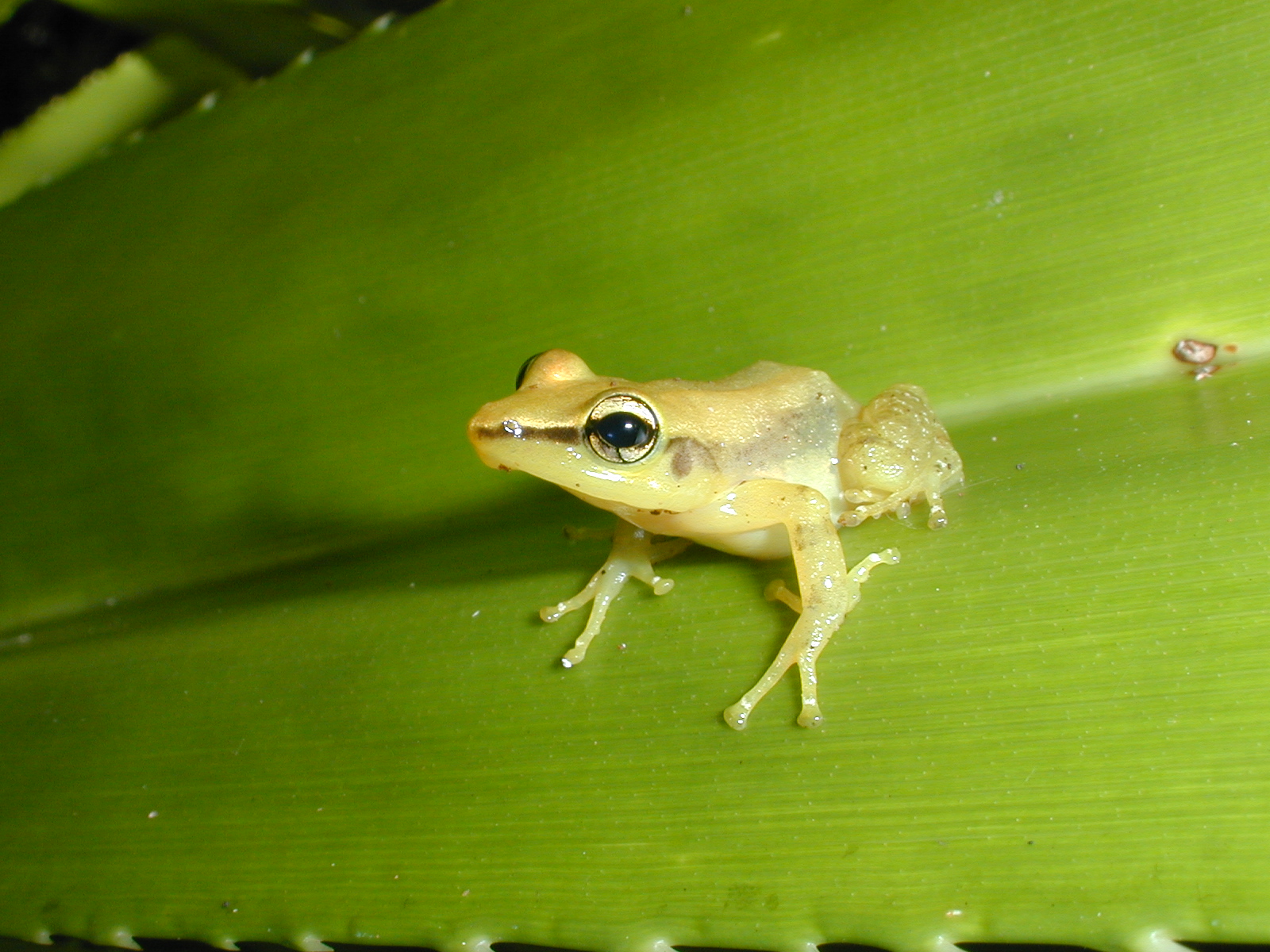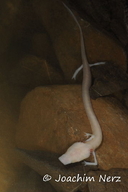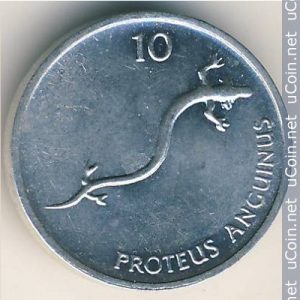Salamander of the Month – the Olm (Proteus anguinus)
The olm is a cave specialized salamander that lives all of its life in subterranean waters in a few areas of eastern Europe. Most individuals are unpigmented and the eyes are poorly developed, typically being covered by skin. Not surprisingly, they do not use their visual sense much but chemo-reception, mechano-reception and electro-reception are all well developed. The olm also exhibits neoteny, that is, it retains many larval features throughout its life (gills, lateral line neuromasts, etc.) and there is no real metamorphosis (AmphibiaWeb, 2014).
A captive colony of olms in France that has been studied for over 50 years has revealed an extremely long life span. The average adult in this population is approximately 68 years old and the maximum life span has been estimated at over 100 years, making the olm the amphibian with the longest known lifespan. Sexual maturity is not obtained until approximately 15 years (similar to humans) and olms only reproduce once every decade or so thereafter (Voituron et al. 2010).
Given its restricted geographic distribution and specialized habitat, olms can be threatened by water pollution if underground waters become contaminated. Slovenia has honored this special salamander by its placement on one of its coins.
Works Cited
AmphibiaWeb 2014 Proteus anguinus: Olm <http://amphibiaweb.org/species/4229> University of California, Berkeley, CA, USA. Accessed Dec 22, 2016.
Voituron, Y., de Fraipont, M., Issartel, J., Guillaume, O., and Clobert, J. (2010). ”Extreme lifespan of the human fish (Proteus anguinus): a challenge for ageing mechanisms .” Biology Letters, Published online before print July 21, 2010, doi: 10.1098/rsbl.2010.0539.


